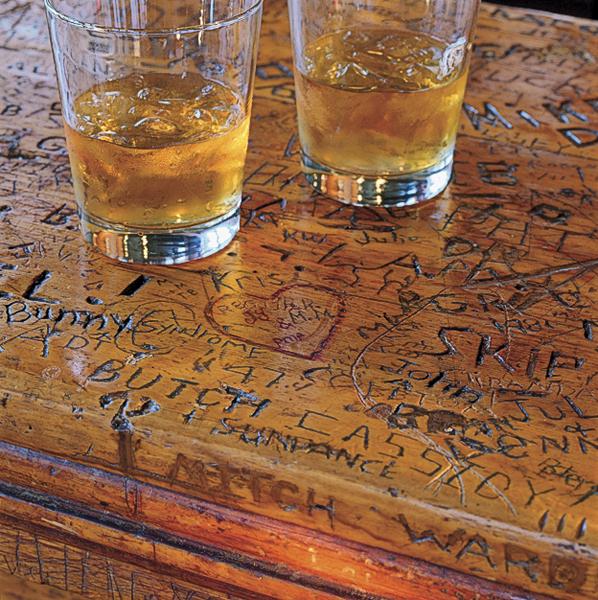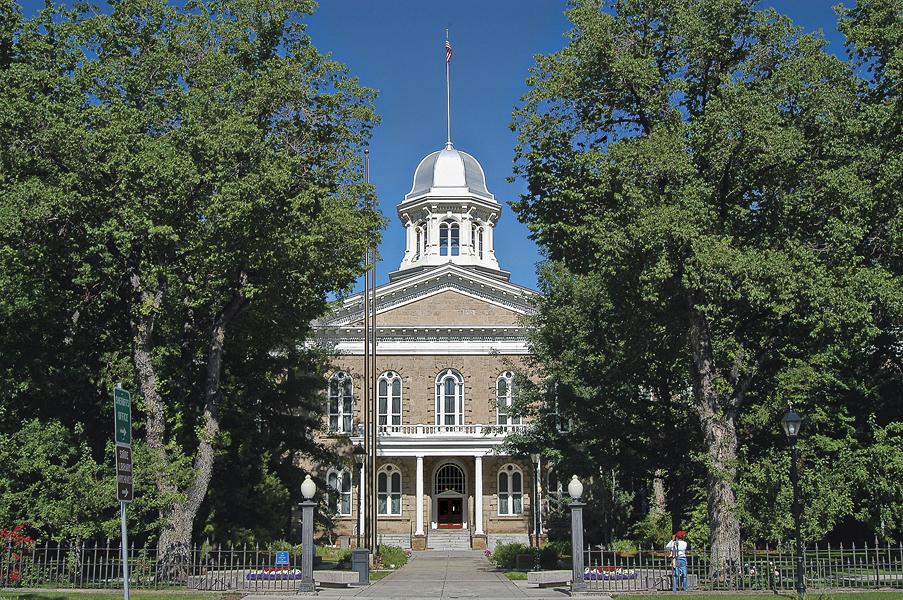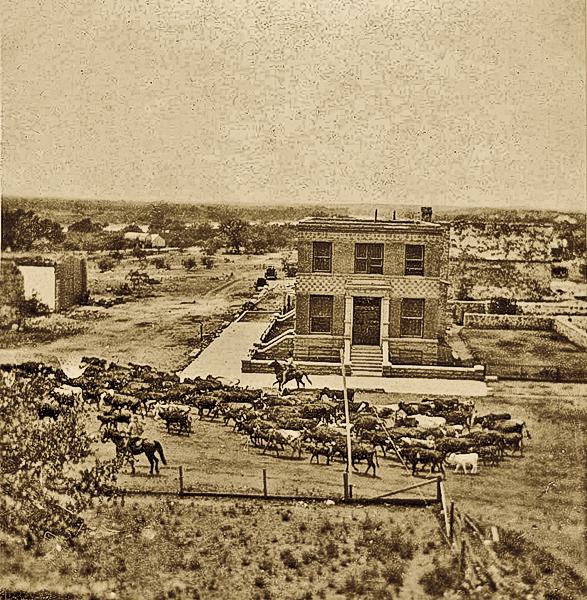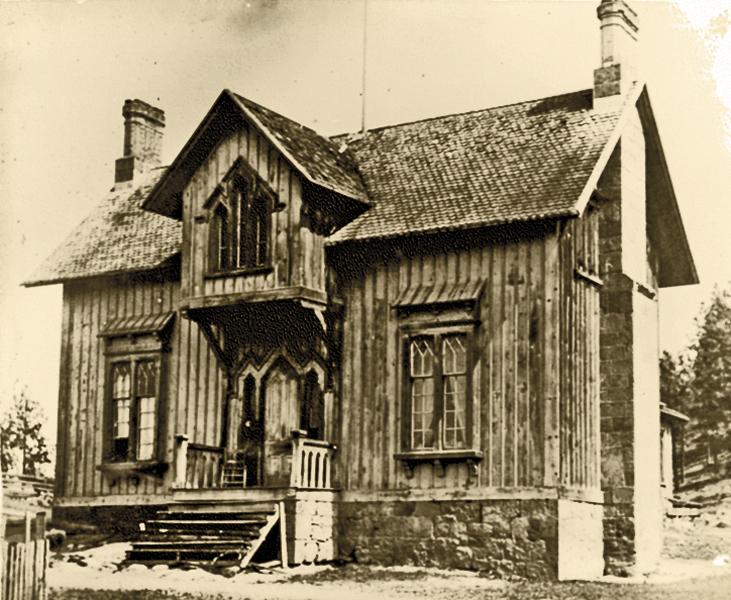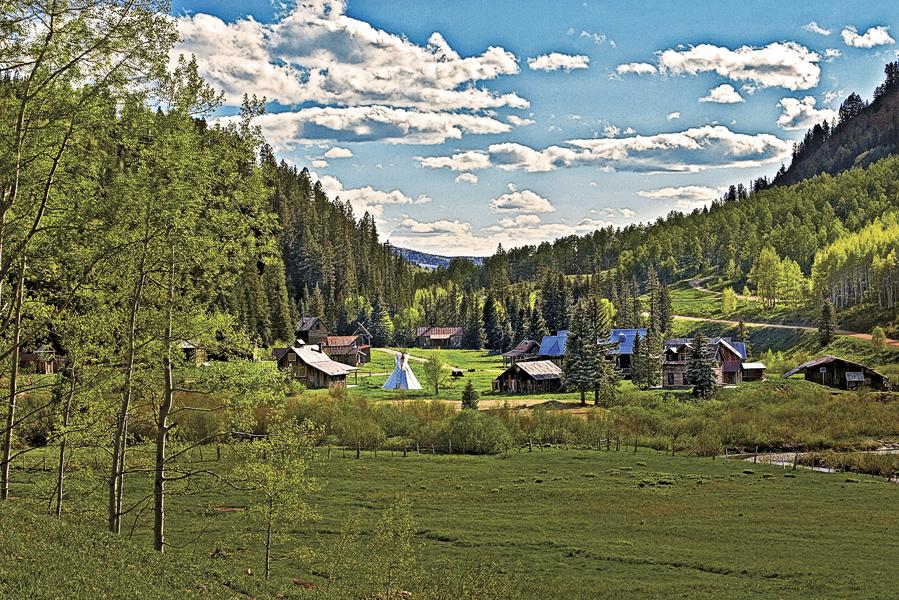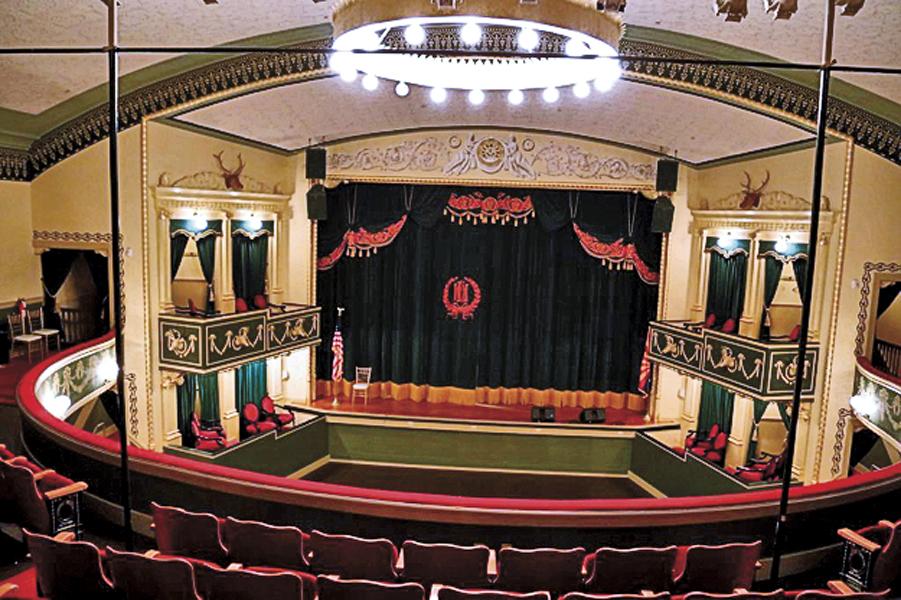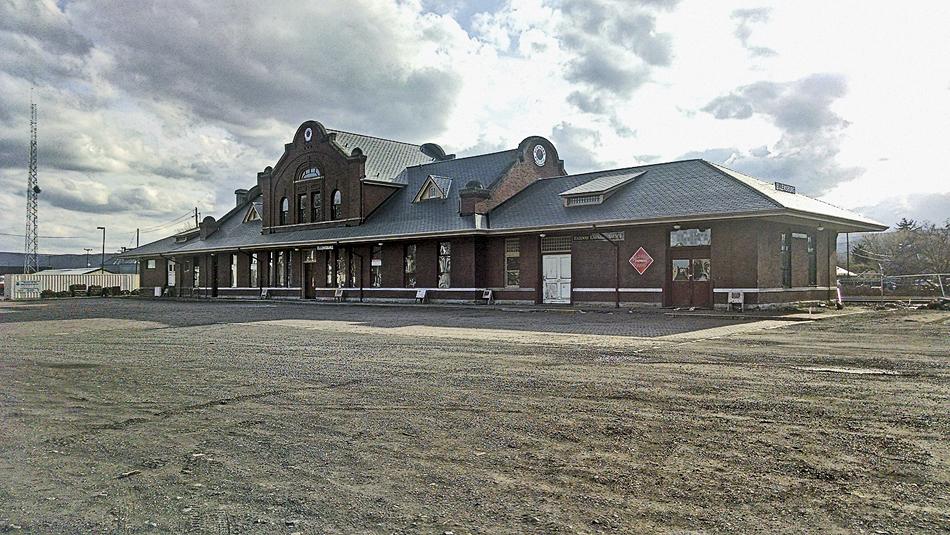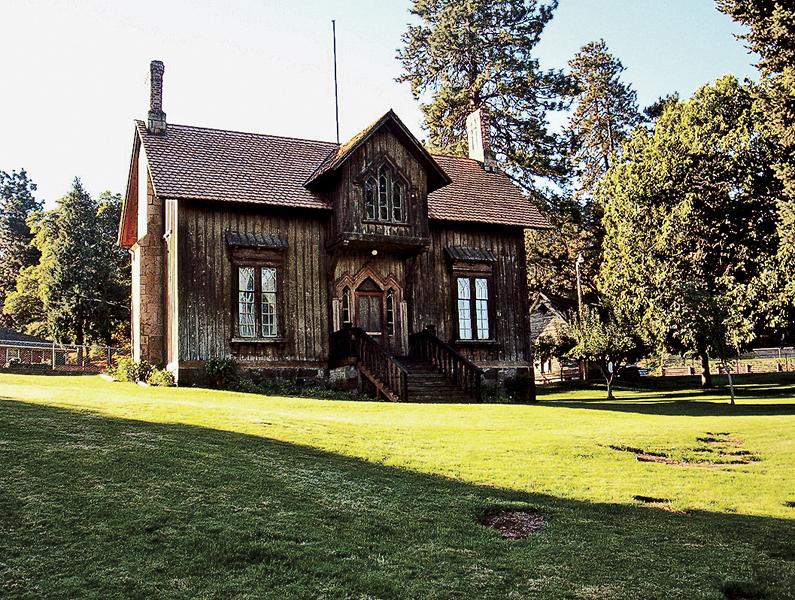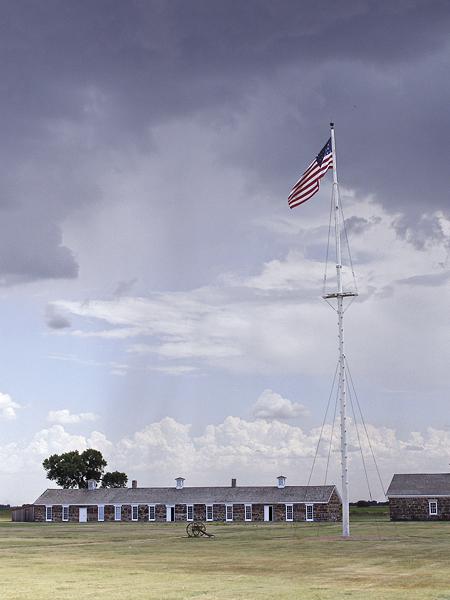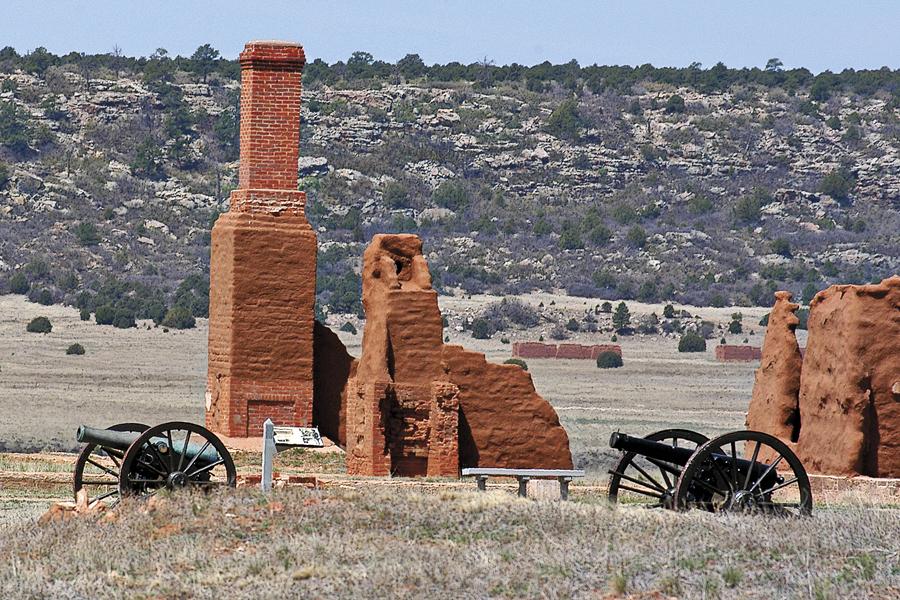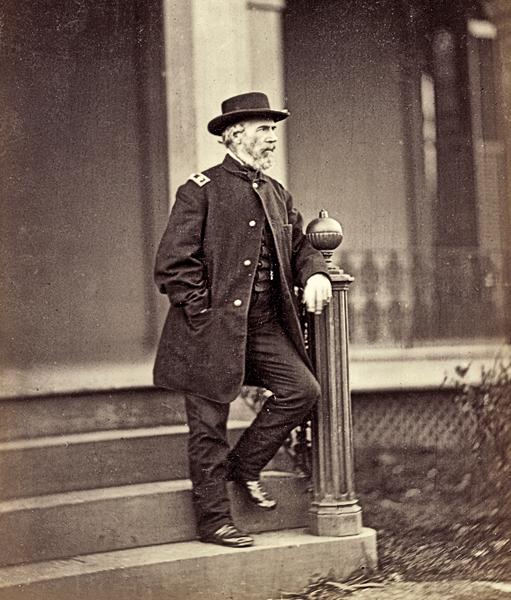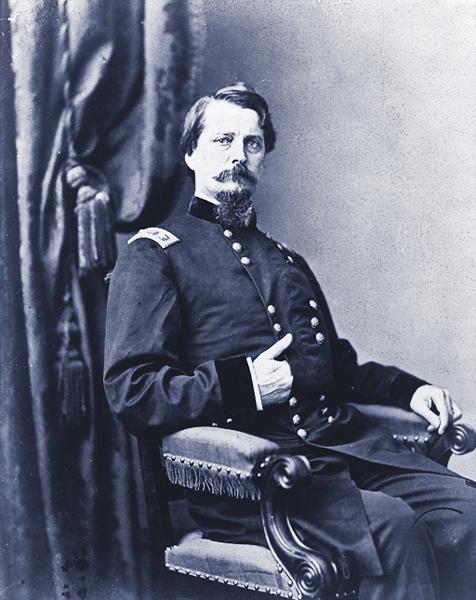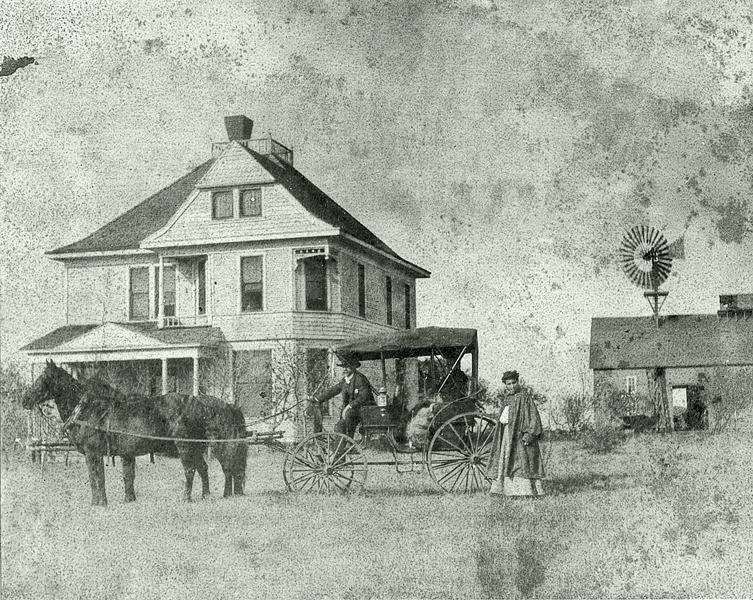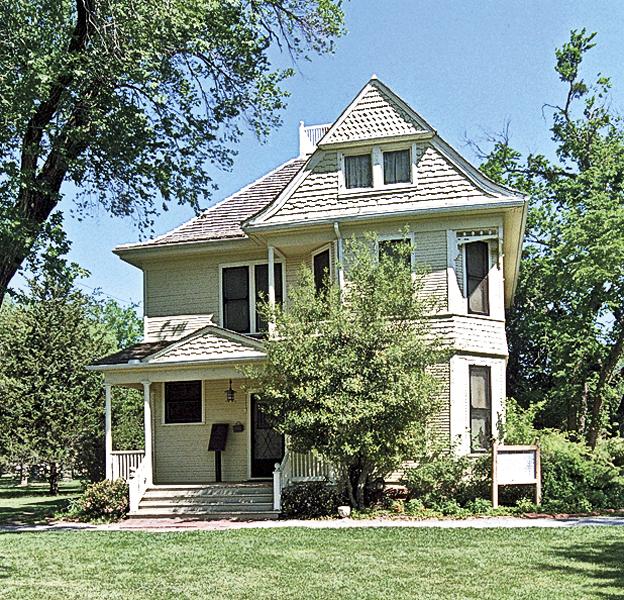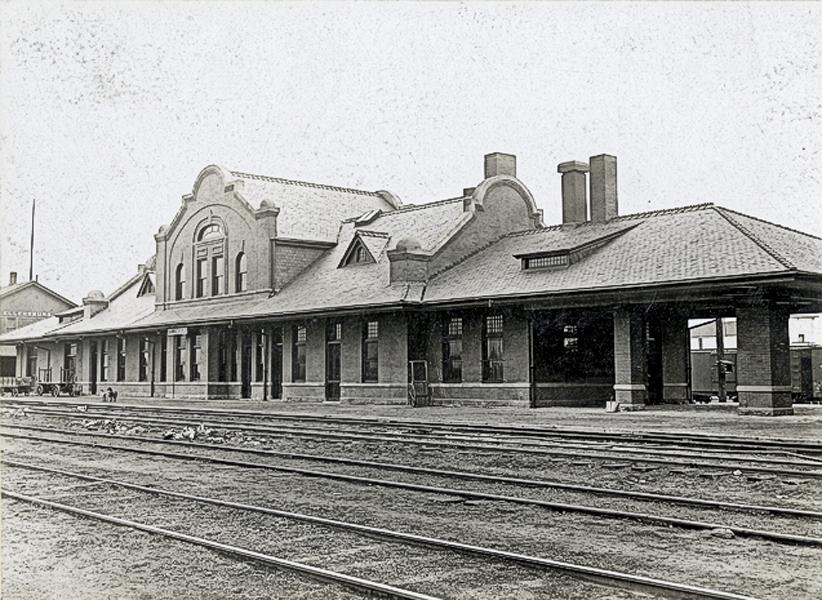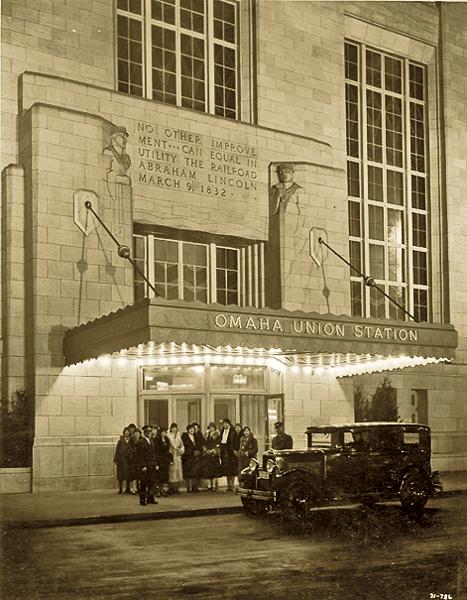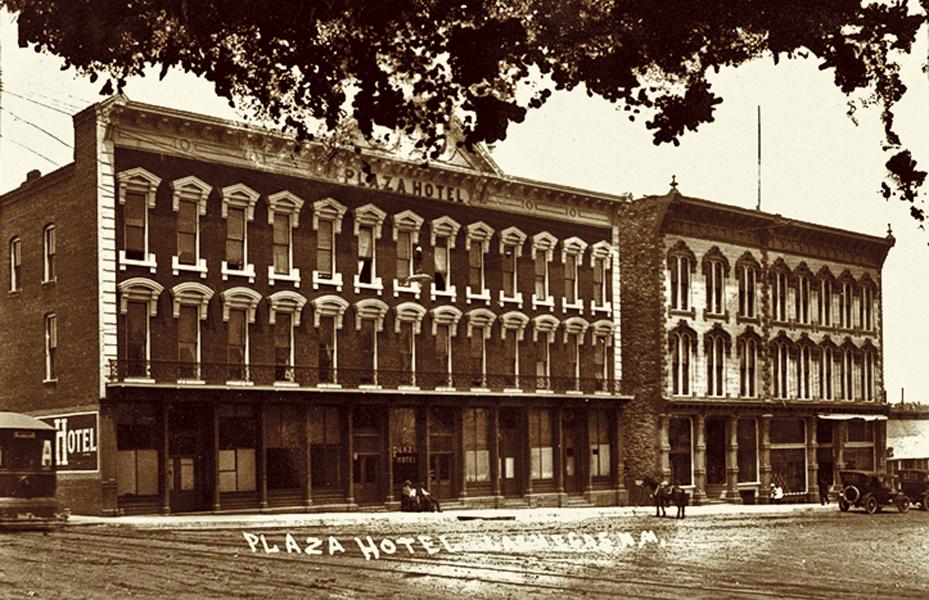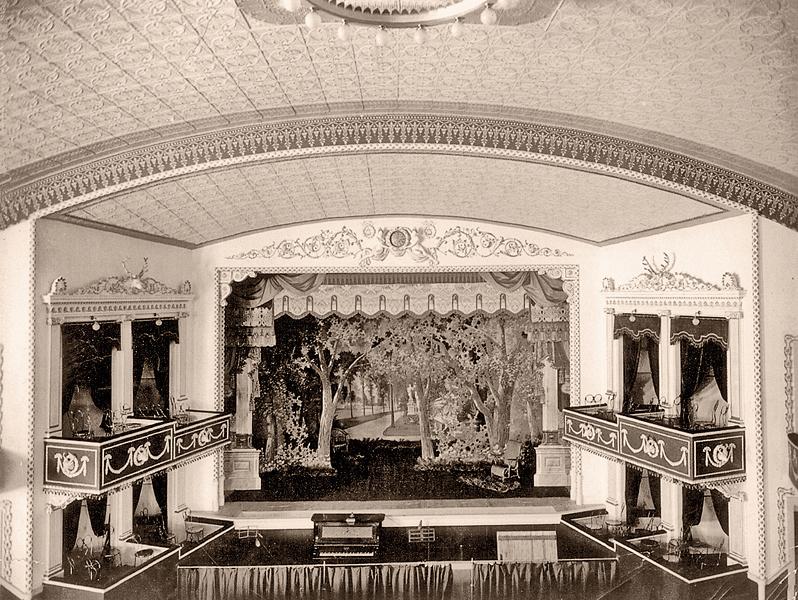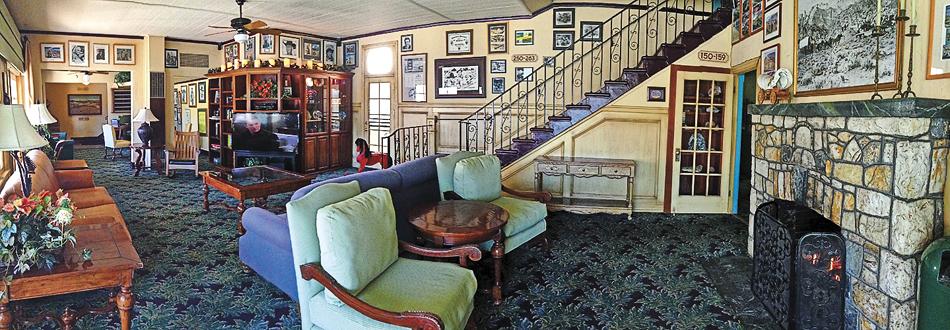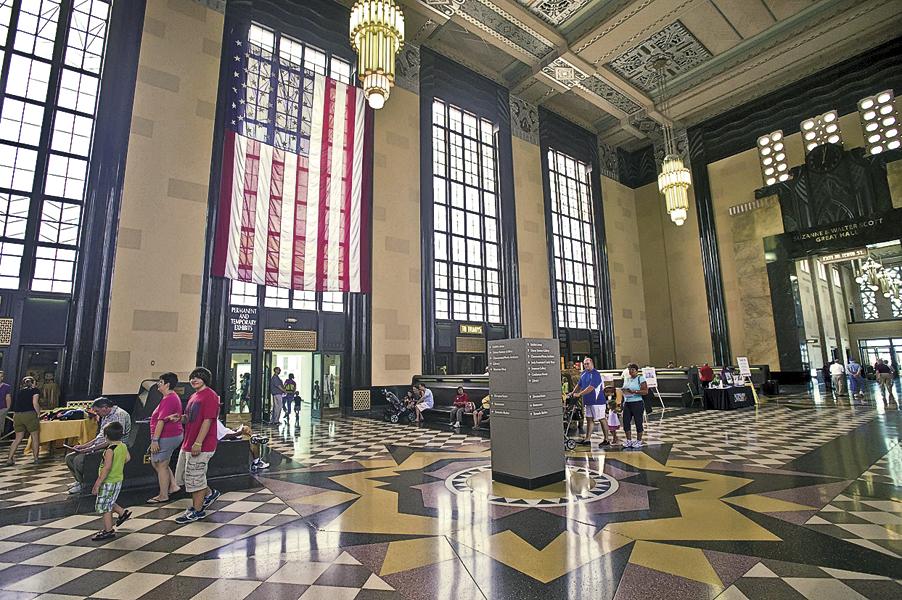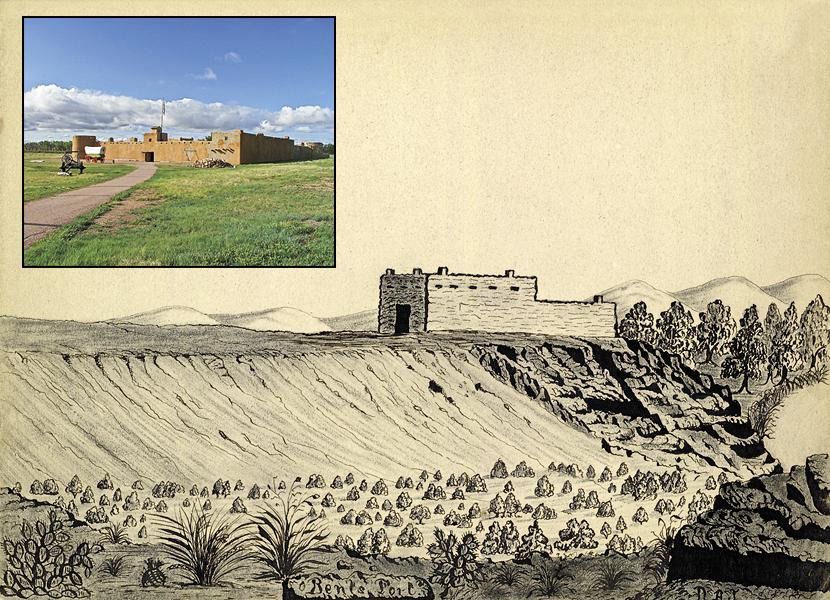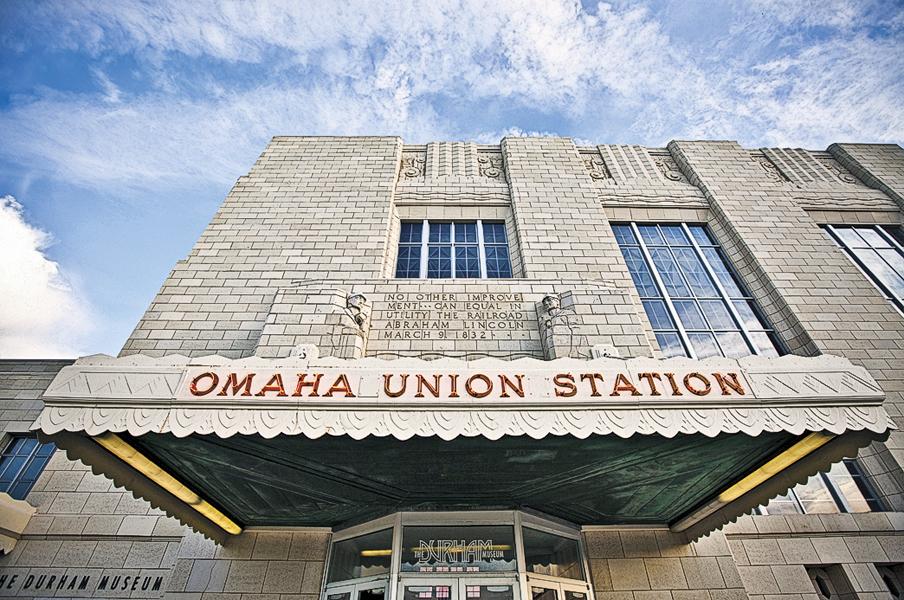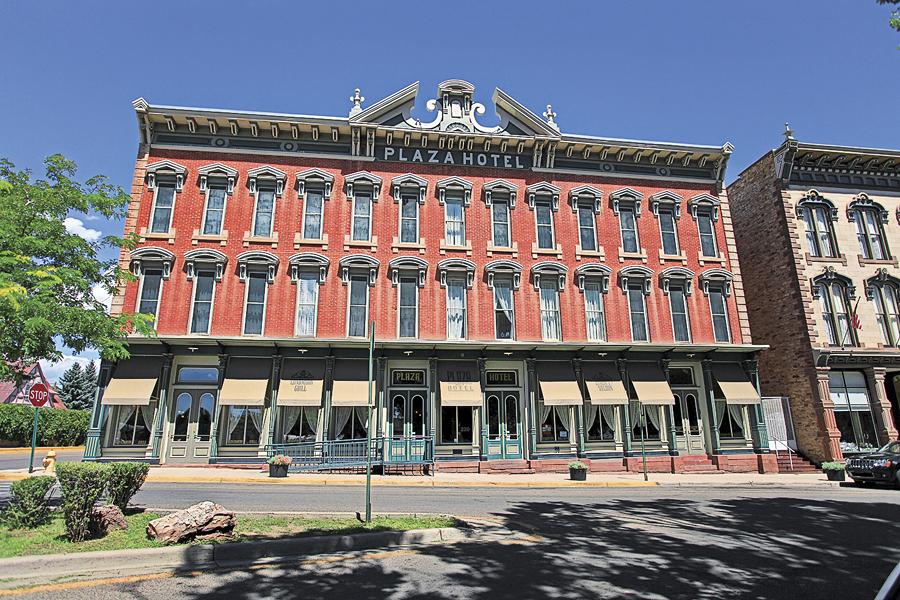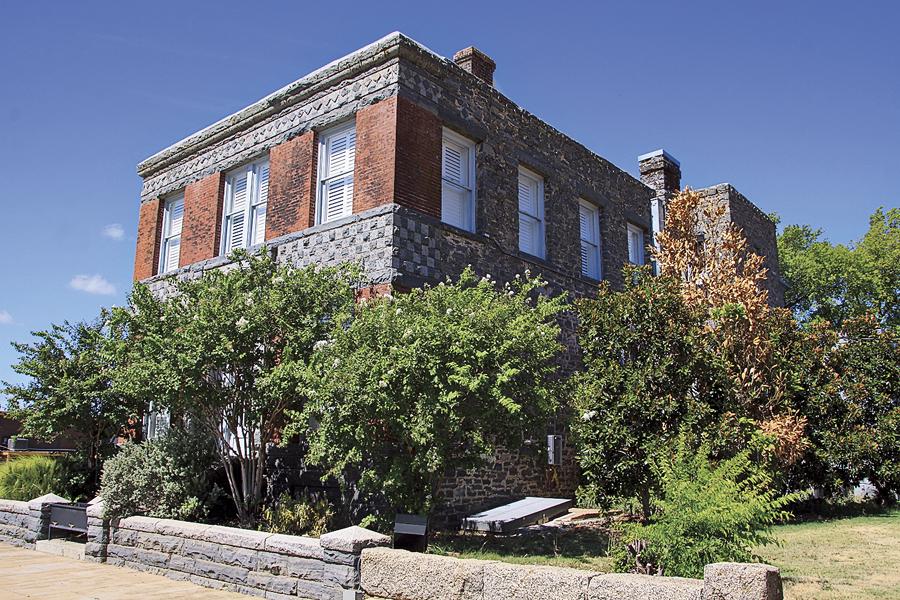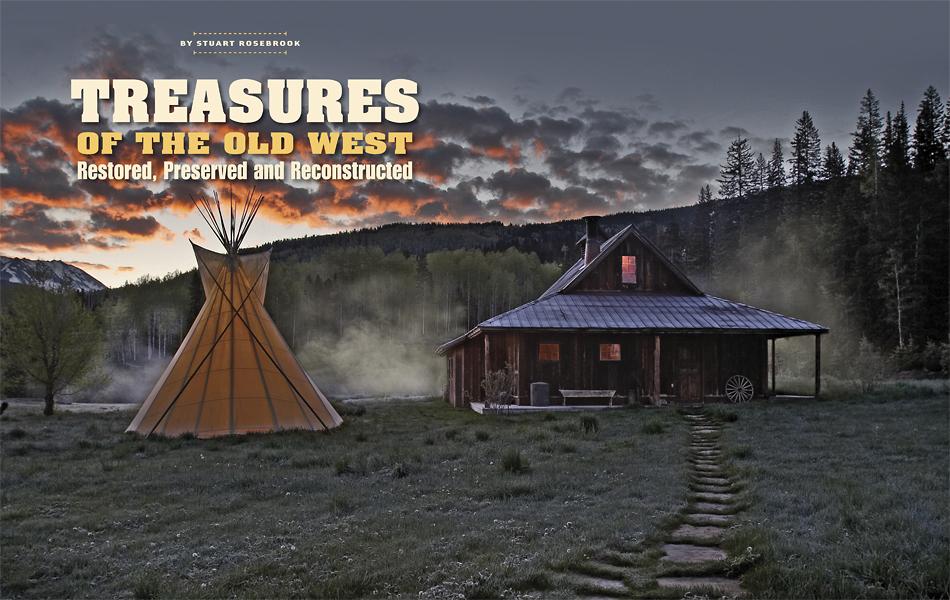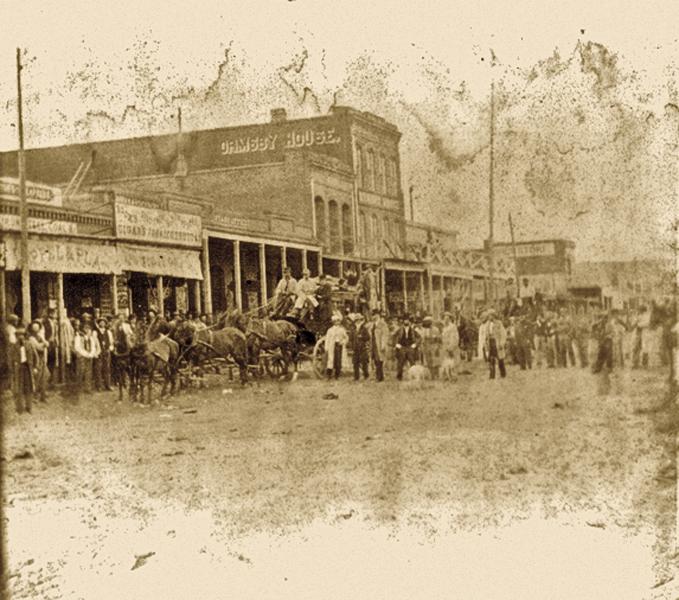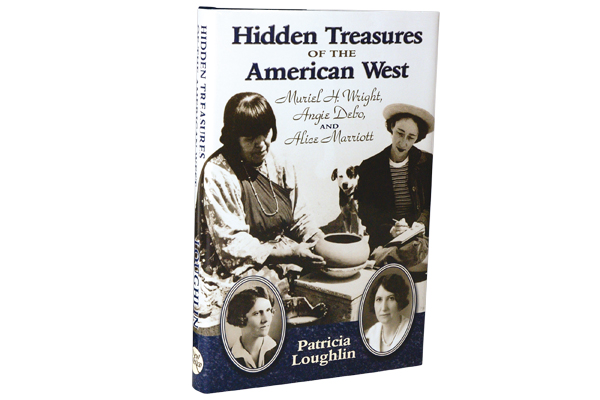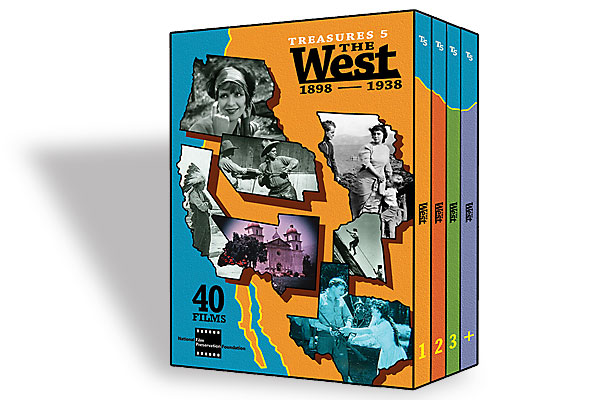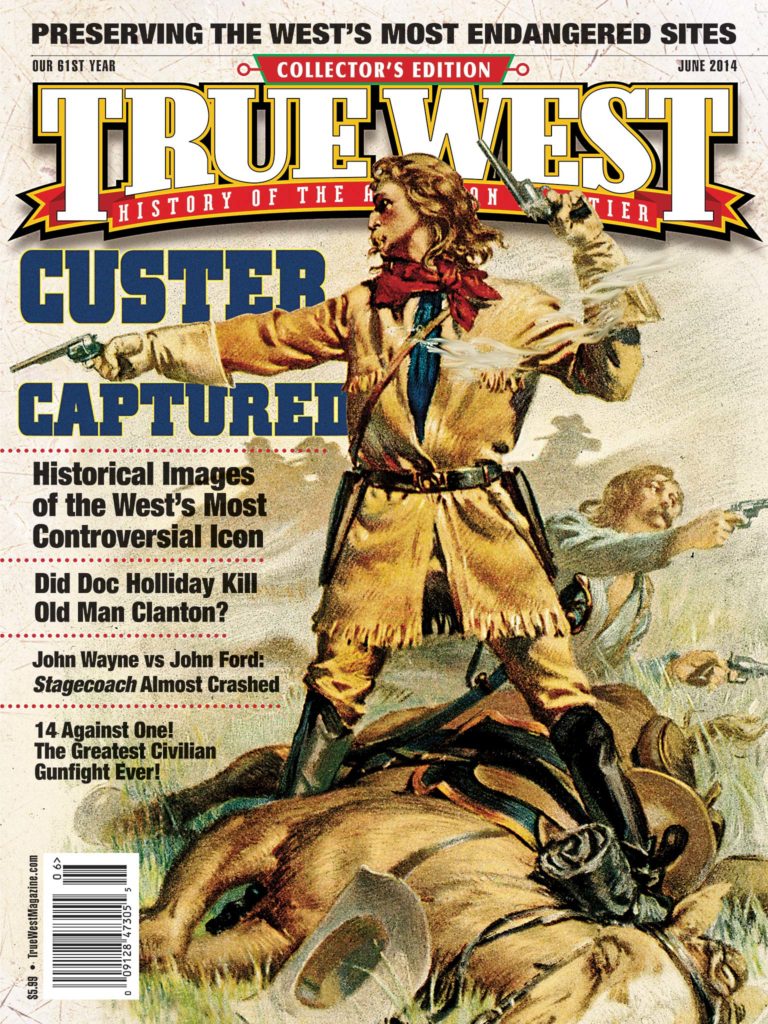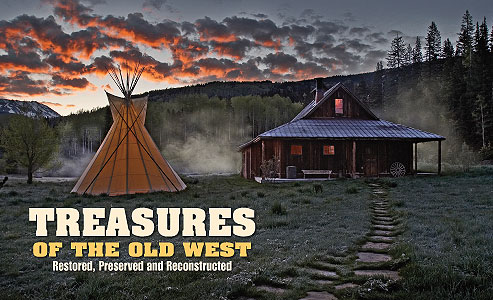 When the Spanish explored the West, they discovered numerous ruins clinging to cliff sides and mountain tops. Today, many of these ancient Puebloan communities have been lost to the vagaries of time, human depredation and looting. Yet, many of these architectural and cultural treasures have been protected, stabilized, preserved and, in some cases, restored.
When the Spanish explored the West, they discovered numerous ruins clinging to cliff sides and mountain tops. Today, many of these ancient Puebloan communities have been lost to the vagaries of time, human depredation and looting. Yet, many of these architectural and cultural treasures have been protected, stabilized, preserved and, in some cases, restored.
These Indian ruins are at the foundation of America’s cultural and architectural preservation of human civilization that is a dynamic, organic and even controversial process that affects nearly every community across the West.
According to historian and preservationist Howard Mansfield’s book The Same Ax, Twice: “Good preservation is a life preserver thrown to us in a shipwreck. Good preservation keeps us in touch with the graces of this life. It’s bricks and mortar, yes. It’s arguments about true colors and authenticity and representation. But true preservation is like the hand that shelters a fire from the wind. It protects the spark of life.”
While European Empires explored and settled Western North America beginning in the 16th century, the fledgling American nation did not send surveyors west of the Mississippi River until the Corps of Discovery explored the Louisiana Purchase from 1803 to 1805. America’s late entrance into the West is reflected in the rarity of American architecture built in the region before 1830 that has been preserved into the 21st century.
This month, True West profiles five broad architectural categories of Western settlements and buildings built during America’s development of the West from the 1830s to the 1930s that have been preserved, restored and even rebuilt: Army Forts, Historic Buildings, Main Street Districts, Train Depots and Hotels.
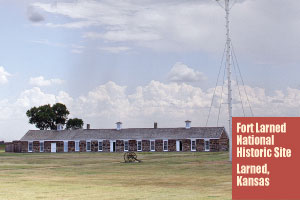
Military Life Well Restored on the Western
Kansas Frontier
Fort Larned National Historic Site is a well-preserved 19th century Army post just west of Larned, Kansas, built to protect the Santa Fe Trail in 1859. The Fort, with its signature sandstone buildings built after the Civil War to replace the collapsing adobe outpost, was named in honor of paymaster general, Col. Benjamin F. Larned, an officer since the War of 1812. The base saw considerable action in the 1860s and 1870s during the Plains Indian wars.
Visitors who tour the Fort will learn about daily life on the frontier, Hancock’s War, the Medicine Lodge Treaty of 1867 and the Buffalo Soldiers of the 10th Cavalry stationed at Fort Larned from 1867-1869 and in 1878. Re-enactors and staff in period dress greet visitors and provide informative tours about the Fort, with a special event every Labor Day Weekend.
Fort Larned is a great example of public and private preservation groups’ dedication to saving historical Western sites. The Fort Larned Old Guarde, a non-profit auxiliary, recently restored a circa 1870s Rucker Army ambulance, and purchased property north of the Fort that was the site of a Cheyenne-Sioux Indian Village burned down during the Hancock War.
Experience History Today @ Fort Larned National Historic Site, NPS.gov; Santa Fe Trail Center Museum & Research Library, Larned, SantaFeTrailCenter.org; Fort Larned Old Guarde, SantaFeTrailResearch.com; and, Kansas Museum of History, Topeka, KSHS.org.
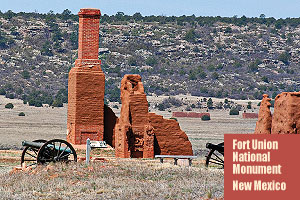
Military and Trading Crossroads of the
Santa Fe Trail
Fort Union National Monument sits squarely on the crossroads of the Mountain and Cimarron routes of the Santa Fe Trail east of Las Vegas and just north of Watrous, New Mexico. Lieutenant Colonel Edwin V. Sumner established the base in 1851 when he was ordered to reorganize the new Military Department No. 9 following the Mexican-American War. During the Civil War, local Hispanics volunteered in record numbers to defend their territory, Company “A” of the 3rd New Mexico Volunteer Infantry was organized at Fort Union and fought at the nearby Battle of Glorieta Pass, which celebrated its 150th anniversary on March 28, 2012.
Fort Union, which closed in 1891, survived into the 21st century as a National Monument because of local Masonic groups from nearby Las Vegas, New Mexico, which successfully organized and lobbied to save the Fort in 1929. In 1954, the Union Land and Cattle Company donated the majority of the 721 acres of the Monument’s two units. From spring to fall every year, preservationists work to maintain the 200,000 square feet of adobe walls of the Fort that have survived since the mid-19th century. Volunteers can contact the Monument’s superintendent if they would like to help support the mission of the park today.
Experience History Today @ Fort Union National Monument, NPS.gov; Pecos National Historical Park, Pecos, NPS.gov; City of Las Vegas History Museum & Rough Rider Memorial Collection, Las Vegas, LasVegasMuseum.org; New Mexico History Museum, Santa Fe; NMHistoryMusuem.org; and, Palace of the Governors, PalaceOfTheGovernors.org.
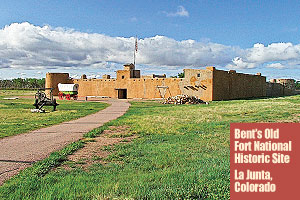
A Bicentennial Living History Center on the Colorado Plains
Visitors will enjoy and appreciate touring the reconstructed Bent’s Old Fort National Historic Site near La Junta, Colorado. Unlike numerous 19th century military and civilian outposts that have had minimal preservation or restoration, the federal government in the 1970s began a restoration process for America’s Bicentennial that rebuilt historic sites from original architectural designs that would provide an educational window into our nation’s past. Bent’s Old Fort has a dynamic hands-on living history experience with rangers and docents in period dress eager to share their knowledge of life at the fort in the 1830s and 1840s.
Audaciously imagined by the Bent brothers, William and Charles, and their partner from Taos, New Mexico, Ceran St. Verain, they constructed the first fort just north of the international boundary between Mexico and the United States on the Arkansas River in 1833. The “Castle on the Plains” became the key trading post between Indians, trappers and freighters on the Santa Fe Trail between Missouri and New Mexico. Freighters especially came to depend on the tradesman employed at Bent’s Fort in Colorado who could repair their heavy wagons which had traveled 800 miles for 50 to 60 days, with a month of tough travel ahead of them before reaching Santa Fe, New Mexico. During the Mexican-American War, the fort became a key military post for Col. Stephen Watts Kearney’s “Army of the West.” Three years later disease and disaster led to the Colorado fort’s abandonment, the once indomitable Castle of the Plains an early victim of American progress.
Experience History Today @ Bent’s Old Fort National Historic Site, NPS.gov; La Junta, VisitLaJunta.net; Comanche National Grassland, Springfield, FS.USDA.gov; History Colorado Center, Denver, HistoryColorado.org; Governor Bent Museum and Gallery, Taos, New Mexico, LaPlaza.org; and, Palace of the Governors, Santa Fe, PalaceOfTheGovernors.org.
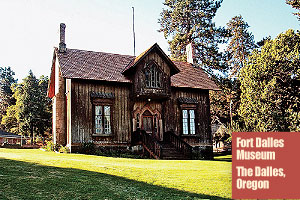 Oregon Trail Fort Provides Living History
Oregon Trail Fort Provides Living History
for Generations
The Surgeon’s Quarters at Fort Dalles Museum and Anderson Homestead is the oldest surviving building on the museum grounds. Built in 1856, the gothic structure has been home to the Fort’s museum since 1905, when the preservation of the building was assured through the lobbying efforts of the ladies who led the “Old Fort Dalles Historical Society.” One of the Oregon’s oldest museums, the Wasco County/City of The Dalles Museum Commission has managed the site, which symbolizes both the territorial heritage of Fort Dalles’ location on original terminus of the Oregon Trail, but also as a preservation victory for a state that has a limited number of pre-Civil War historic structures.
Visitors to the Surgeon’s Quarters will learn about the life of Brevet Brig. Gen. Dr. Joseph Lee Bullock Brown who lived in the surgery during from 1856 to 1859. Brown, a career Army medical officer, served with distinction from 1850 to 1886, including additional Western duty stations in Texas, Kansas, Washington and Nebraska. Fort Dalles, which is listed on the National Register of Historic Places, is also home to three preserved buildings from the 1890s Anderson Homestead, which was moved from nearby Pleasant Ridge in the early 1970s.
Experience History Today @ The Fort Dalles Museum and Anderson Museum, FortDallesMuseum.org; The Columbia Gorge Discovery Center and Wasco Historical Museum, GorgeDiscovery.org; The Dalles Area Chamber of Commerce, DallesChamber.com; and, Oregon Historical Society and Oregon History Museum, Portland, OHS.org.
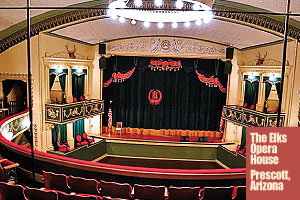 High Culture Unites Preservationists in
High Culture Unites Preservationists in
Territorial Capital
The Elks Opera House in Prescott, Arizona, opened its theater doors on February 20, 1905, offering the residents of the mile-high city a festive mixture of dances, music, theater, vaudeville and community events. Architect John J.R. Minor Jr. designed the popular Opera House which screened its first silent movie in 1915. (Tom Mix made dozens of silent movies in the Prescott area for Selig Polyscope Pictures and Fox in the 1910s and 1920s.) Able to seat up to 736 patrons, the Elks eventually became the town’s movie house before it was temporarily used for live theater in the in the mid-1970s.
Today, the Opera House has been restored to its early 20th century grandeur and renamed the Elks Theatre & Performing Arts Center. Restoration of the unique theatre was a community preservation victory that was completed after 13 months of restoration, supervised by Bill Otwell of Otwell Associates Architects from June 2009 to July 2010 when it reopened to a gala grand opening. Owned by the Performing Arts Center since 2012, the Elks Theatre rebirth as a fully operational entertainment venue is symbolic of how a community, through private and public dollars—and determined preservationists—can save a significant architectural landmark and return it to purposeful use for present and future generations.
Experience History Today @ Elks Theatre & Performing Arts Center, PrescottElksTheater.com; Sharlot Hall Museum, Prescott, Sharlot.org; The Phippen Museum, PhippenArtMuseum.org; The Smoki Museum, SmokiMuseum.org; and, Prescott Chamber of Commerce, Prescott.org.
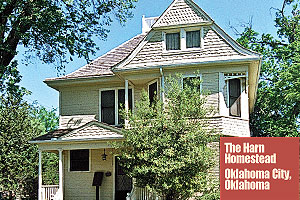 Oklahoma Homestead Celebrates Sooner Heritage
Oklahoma Homestead Celebrates Sooner Heritage
The Harn Homestead and 1889ers Museum in Oklahoma City, Oklahoma, is a unique history museum celebrating farm life in the Sooner State since the land run in April 1889. William Fremont Harn came to Oklahoma City in 1891 when the federal government appointed him to sort out land-rush legal disputes. Harn soon bought land throughout the city, including a160-acre homestead in which he built a simple home for himself and his wife Alice. When she wanted to return home to Ohio, he ordered a Queen Anne style home shipped by train from Chicago and constructed in 1904.
Harn became a well-known developer and attorney during the early decades of Oklahoma City, donating 40 acres of his farm, along with 40 acres from his partner J.J. Culbertson, for the site of the new state capital in 1910. He and Culbertson developed much of his original homestead, but after his death in 1944, Harn’s remaining property passed to his niece Florence Wilson. In 1967, she donated her inheritance to Oklahoma City.
Today, the Harn Homestead is listed on the National Register of Historical Places, maintains 9.4 acres with seven historic buildings, including the Harns’ Victorian-era home, a one-room schoolhouse and the homestead’s historic stone and cedar barn. The gardens and grounds include an educational 19th century farm and garden for students to enjoy hands-on experiences of life on a territorial farm.
Experience History Today @ The Harn Homestead and 1889ers Museum, HarnHomestead.com; National Cowboy & Western Heritage Museum, NationalCowboyMuseum.org; Oklahoma History Center, OkHistory.org; and, Oklahoma Heritage Association, OklahomaHeritage.com.
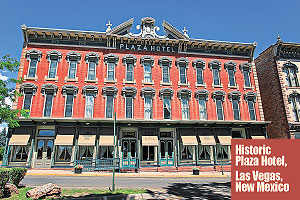 “Belle of the Southwest” Anchors Heritage of Mexican Land Grant City
“Belle of the Southwest” Anchors Heritage of Mexican Land Grant City
The city of Las Vegas, New Mexico, includes 900 buildings on National Register of Historic Places. Founded along the Gallinas River on the Santa Fe Trail by Mexican settlers in 1835, downtown was built in Spanish Colonial style, with a central plaza and four surrounding blocks that could easily be defended. The eastern New Mexico city became a primary commercial center, growing in importance with the arrival of the Santa Fe Railroad in 1880. The post-Civil War era in Las Vegas is also famous for numerous notorious residents and visitors, including Billy the Kid, Doc Holiday, Big Nose Kate and Wyatt Earp. In June 1899, Teddy Roosevelt’s Rough Riders, many of whom were from New Mexico, chose Las Vegas as the official location of their annual reunion. In 1961, the Rough Rider Collection was officially received by the City of Las Vegas and is the signature collection of the Las Vegas History Museum.
Historic preservation is important to the city of Las Vegas which has worked to create a vibrant downtown that celebrates its historic architectural heritage. Key sites in Las Vegas include the Historic Plaza Hotel, Old City Hall, the Masonic Temple, the La Castaneda Hotel and the Dr. H.J. Mueller House, an 1881 Victorian home with an octagonal tower. Currently, the 1882 E. Romera House and Fire House is being renovated to include a fire and water museum.
The Historic Plaza Hotel, Las Vegas, New Mexico, which opened its doors to patrons in 1882, is one of the most significantly successful preservation and renovation projects in downtown Las Vegas. Made famous by the Rough Riders, the Plaza Hotel hosted the Spanish-American War veterans reunion until the last one in the 1970s. Today, the award-winning Plaza remains a historical cornerstone of the community, hosting numerous annual events. the award-winning Plaza remains a cornerstone of the community.
The Historic Plaza Hotel was completely renovated in 1982 and expanded in 2009, when the adjacent Charles Ilfeld Building, was renovated, nearly doubling the capacity of the original hotel. Byron T.’s Saloon, named after the hotel’s official ghost, Bryon T. Mills, and the Landmark Grill restaurant, offer visitors an 1880s ambience with a 21st century flair. Don’t forget to ask at the front desk about Mills, the former owner of the hotel, who is said to be quite a friendly and active ghost, as well as a permanent resident of Room 310.
If you would like to enjoy a guided or self-guided walking tour in Las Vegas, visit the Las Vegas Citizens’ Committee for Historic Preservation at the Santa Fe Trail Interpretive Center located in the city’s historic Bridge district.
Experience History Today @ City of Las Vegas History Museum & Rough Rider Memorial Collection, LasVegasMuseum.org; Historic Plaza Hotel, PlazaHotel-NM.com; Las Vegas Main Street, MainStreetLVNM.org; Las Vegas-San Miguel Chamber of Commerce, LasVegasNewMexico.com; Santa Fe Trail Interpretive Center, SantaFeTrailNM.org; and, Las Vegas Citizens’ Committee for Historic Preservation, LVCCHP.org.
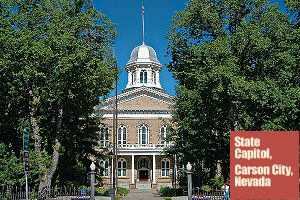 Pioneer’s Gamble Pays Off on Carson City
Pioneer’s Gamble Pays Off on Carson City
Carson City, Nevada’s Historic District was created in 1982 to promote preservation and positive development and growth amidst the City’s central, cultural resources. The downtown area encompasses historic homes and mansions, churches and commercial buildings, a hotel and saloon, and a former brewery and U.S. Mint, which is home to the local Nevada State Museum.
Carson City’s roots date to the California Trail days when a crossroads settlement of Eagle Creek served travelers and immigrants to California. In 1858, the entrepreneurial Abraham Curry bought the settlement and renamed it Carson City with the goal of his town becoming the future state capital. His gamble paid off when Carson City became the territorial capital in 1861 and then the permanent seat of state government in 1864.
Carson City served the needs of immigrants, travelers and the mining industry. An important crossroads on the California Trail, the Pony Express and the Butterfield and Wells Fargo stage lines had stations in the city. In 1869, another major silver strike led to the Virginia & Truckee Railroad being built from Virginia City to Carson City. With so much silver and gold being mined nearby, the U.S. Mint operated a branch in Carson City from 1870 to 1893. The Capitol was built in 1871, with a series of historic additions made to accommodate the growth of Nevada’s state government. The neoclassical Italianate style building is on the National Register for Historic Places and is open weekdays for self-guided tours.
Experience History Today @ Carson City Historic District, Carson.org; Carson City Visitor’s Bureau, VisitCarsonCity.com; Nevada State Museum and Mint, Carson City, and Nevada State Railroad Museum, Museums.NevadaCulture.org.
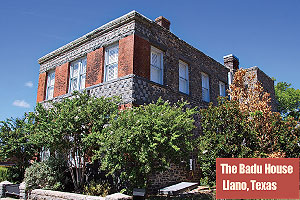 Renewal and Restoration Lauded in Heritage Rich Hill Country Town
Renewal and Restoration Lauded in Heritage Rich Hill Country Town
Llano, Texas’s Main Street Program celebrates a community proud of its Lone Star history. Founded in June 1856, the Llano County seat did not begin to grow until after the late 1870s. In 1885, a new, ornate county courthouse was built, reflecting the town’s growing pride and importance in the state’s economic growth during the Gilded Age. In 1886, iron ore was discovered in the county, bringing the railroad and heavy investment to the growing town. In 1893, the courthouse burned, replaced with the current county courthouse, which is on the National Register for Historic Places. Unfortunately, the iron boom faded and the city declined from the 1890s to the 1920s. Since then, Llano’s economy has focused on its strengths: ranching, farming, rail shipping and granite mining. In the 1980s, Hill Country tourism also became a key contributor to the local economy. Community leaders and preservationists sought recognition of key historic structures, leading to the restoration of the Llano County Redtop Jail and the Badu House. Today, the Badu, once a bank and residence, is a bed and breakfast. The Llano County Historical Museum, housed in the historic Bruhl Drugstore, also has a restored frontier log cabin as a key educational exhibit.
Today, Llano’s Main Street Program is in its second decade of preservation and restoration of the city’s downtown district. In 2007, the restoration of the Llano County Courthouse was completed, a symbol of city’s commitment to its heritage and history. In 2013, with funds to restore Main Street facades, the old Llano News newspaper office received a restoration facelift, which, along with its neighbors on the historic street, have been revitalized since 2002. New sidewalks and gardens also connect the central district with Pioneer Park in the Railyard District and Museum with the bridge over the Llano River to the Library and Red Top Jail.
Experience History Today @ Llano Main Street Program, LlanoMainStreet.com; Llano County Historical Museum, LlanoMuseum.org; Friends of the Red Top Jail, RedTopJail.com; The Badu House, TheBaduHouse.com; and, Llano Chamber of Commerce, LlanoChamber.com.
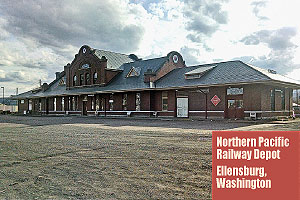 Community Leadership Saves Cherished
Community Leadership Saves Cherished
Train Depot
The Northern Pacific Railway Depot in Ellensburg, Washington, has been restored because of the driving passion of Stephen Hayden and his non-profit preservation organization, Friends of the Northern Pacific Depot. Retired airplane manufacturer and Northern Pacific Railway enthusiast, Hayden has worked for years to save and restore the city’s once elegant Ellensburg Depot. He has invested thousands of hours and nearly a million of his own dollars into the project to assure that the architectural integrity of the building was restored.
Ellensburg quickly became a hub of economic enterprise in the region when Northern Pacific passenger and freight service connected the city to the world in 1886. The current depot, designed by architects Reed & Stern (who also designed New York’s Grand Central Station) opened in 1910, ushering in a grand era of Ellensburg passenger service. After WWII, train
passenger ridership slowly waned until 1981, when Amtrak permanently abandoned service to the Kittitas County seat. Since 2010, the Friends of the Northern Pacific Depot have invested $1.2 million in the restoration of the station. This spring a new fence, curbs and pavers will be installed around the station. Hayden says approximately $800,000 of repairs, upgrades and restoration is still required to complete the final 40 percent of the project. Nonetheless, the community has witnessed how a grass roots organization has saved one of Ellensburg’s most significant architectural and historical buildings.
Experience History Today @ Friends of the Northern Pacific Depot, Facebook.com/EllensburgDepot; Ellensburg Downtown Association, EllensburgDowntown.org; Kittitas County Historical Museum, KCHM.org; Cascade Association of Museums and History, KittitasHistory.com; Kittitas County Chamber of Commerce, KittitasCountyChamber.com.
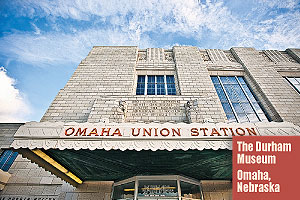 Grand Omaha Depot Welcomes Visitors from
Grand Omaha Depot Welcomes Visitors from
Near and Far
The Durham Museum in Omaha, Nebraska’s Union Station is one of most significant history museums and preservation successes in the American West. The Union Pacific Railroad headquarters have been in Omaha since 1862, but it wasn’t until 1929 that a train station of architectural significance was built in the railway’s hometown. Architect Gilbert Stanley Underwood designed the 124,000 square-foot, art-deco masterpiece, which opened in January 1931. The architectural wonder greeted millions of rail travelers until its closure in 1971. The City of Omaha was given the building in 1973, which they used as the Western Heritage Museum. In 1995-1996, the historic building and museum were renovated, and in 1997 it was renamed the Durham Museum in honor of benefactors Charles and Margre Durham.
Since 1997, the Durham Museum has established an international reputation for excellence in museum management, with strong ties to the Smithsonian Institution, National Archives, the Library of Congress and Chicago’s Field Museum. Restoration and preservation is ongoing to assure that the historic Union Station and its ancillary properties, such as the recently renovated 1899 Boiler Plant, will be sustained for generations. Visitors to the Museum should not miss the crown jewel of interior’s restoration, the Suzanne and Walter Scott Great Hall. The grand concourse soars 65 feet, is 160 feet long and 72 feet wide, and inspires visitors with its detailed craftsmanship and architectural motifs.
Experience History Today @ The Durham Museum, DurhamMuseum.org; Douglas County Historical Society, OmahaHistory.org; Gold Coast Omaha Historic Preservation Association, OmahaHistoricDistrict.org; and, HistoricOmaha.com.
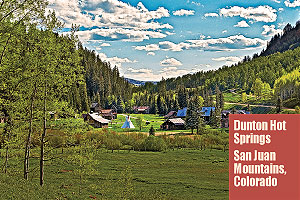 Owens River Valley Hotel Hosted Film Stars
Owens River Valley Hotel Hosted Film Stars
The Historic Dow Hotel and Dow Villa Motel in Lone Pine, California, has been a home away from home for Hollywood’s producers, stars and crews for decades when filming in the picturesque Owens River Valley and Alabama Hills, beneath the snow-covered peaks of the eastern Sierra Nevada. Lone Pine resident Walter Dow built the hotel in the 1920s, with 55 rooms and a front-porch view of Mount Whitney. Stars such as John Wayne, Errol Flynn, Gene Autry and Robert Mitchum stayed at Dow’s quaint and comfortable inn, quickly giving it a reputation as the place to stay in Lone Pine. In 1957, Dow sold the hotel to two couples Mr. and Mrs. Joe Bonham and Mr. and Mrs. Ivan Turner, who maintained the hotel while building the Dow Villa Motel next door. The Dow is still family operated by the Bonham daughters, who are dedicated to serving the communities of Lone Pine and Hollywood, while welcoming travelers from around the world to their charm-filled, recently restored, historic Dow Hotel.
Experience History Today @ Dow Hotel and Dow Villa Motel, DowVillaMotel.com; Lone Pine Film History Museum, LonePineFilmHistoryMuseum.org; Lone Pine Chamber of Commerce, LonePineChamber.org.
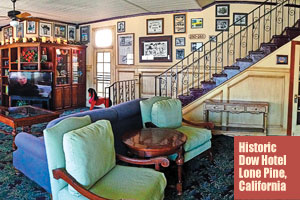 A Hot Springs Retreat in a Historic Colorado Mining Town
A Hot Springs Retreat in a Historic Colorado Mining Town
Dunton Hot Springs, in the San Juan Mountains, is one of the most unique restoration projects in the West. Dunton was founded on the West Delores River 12 miles from Rico as a mining town in 1885. The isolated community grew as the mines were expanded, growing from 50 residents in the 1890s to its peak of 260 to 300 locals in 1905. With the closure of the mines in 1918, community members Joe and Dominica Rosario bought the whole town and turned it into a cattle ranch. The beautiful alpine valley and hot springs became a dude ranch in the 1970s and 1980s, before the property was sold to the current owners in the 1990s. Today, the historic buildings of the Dunton ghost town and ranch have been restored and transformed into an exclusive, luxury resort, with 14 cabins, bathhouse, spa, chapel, and the original saloon and dance hall. According to lore of the mining town, Butch Cassidy and the Sundance Kid carved their names into the Dunton bar, but the real lore being created in Dunton today is the rustic, luxury enjoyed by the guests at this exclusive mountain retreat.
Experience History Today @ Dunton Hot Springs, DuntonHotSprings.com; Dolores Chamber of Commerce, DoloresChamber.com; Telluride Chamber of Commerce, TellurideChamber.com.
Stuart Rosebrook’s first memory of a National Historic Landmark community is Jerome, Arizona, a central Arizona mining town that was nearly abandoned by the early 1960s, but today is a thriving artist colony dedicated to preserving its architectural past.
{jathumbnail off images=”images/stories/Jun-2014/Jun-14_sales-feature/fort-larned-KA.jpg,images/stories/Jun-2014/Jun-14_sales-feature/fort-union-NM.jpg,images/stories/Jun-2014/Jun-14_sales-feature/Bent_s-Old-Fort-National-Historic-Site-La-Junta-Colorado.jpg,images/stories/Jun-2014/Jun-14_sales-feature/Fort-Dalles-Museum-The-Dalles-Oregon.jpg,images/stories/Jun-2014/Jun-14_sales-feature/The-Elks-Opera-House-Prescott-Arizona.jpg,images/stories/Jun-2014/Jun-14_sales-feature/The-Harn-Homestead-Oklahoma-City-Oklahoma.jpg,images/stories/Jun-2014/Jun-14_sales-feature/Historic-Plaza-Hotel-Las-Vegas-New-Mexico.jpg,images/stories/Jun-2014/Jun-14_sales-feature/State–Capitol-Carson-City-Nevada.jpg,images/stories/Jun-2014/Jun-14_sales-feature/The-Badu-House_Llano-Texas.jpg,images/stories/Jun-2014/Jun-14_sales-feature/Northern-Pacific-Railway-Depot-Ellensburg-Washington.jpg,images/stories/Jun-2014/Jun-14_sales-feature/The-Durham-Museum_Omaha-Nebraska.jpg,images/stories/Jun-2014/Jun-14_sales-feature/Dunton-Hot-Springs-San-Juan-Mountains-Colorado.jpg,images/stories/Jun-2014/Jun-14_sales-feature/dow-hotel-lone-pine-california.jpg”}
Photo Gallery
– Courtesy Dunton Hot Springs –
Nevada’s ornately built State Capitol building is the second oldest west of the Mississippi River.
– Courtesy Nevada Tourism –
The Fort Dalles’ Surgeon’s Quarters built in 1856, was an early preservation victory for The Dalles’ community leaders, who in 1905 successfully saved the building both for future generations, and as the Fort Dalles Museum (next slide).
– Photos Courtesy Columbia Gorge Discovery Center –
The miners who built the rugged Dunton mining camp (above) in Colorado’s San Juan Mountains in the 1880s would not recognize their humble homes restored and transformed into one of the most luxurious hotel spas in the American West.
– Courtesy Dunton Hot Springs –
The historic Ellensburg Northern Pacific Railway Depot (above and next slide) has been saved and meticulously restored to its 1910 architecture because of the passionate efforts and community leadership of local railroad enthusiast and investor Stephen Hayden and the Friends of the Northern Pacific Depot.
– Courtesy Stephen Hayden/Friends of the Northern Pacific Depot/Historical photo Courtesy Kittitas County Historical Museum –
The signature sandstone blocks of Fort Larned’s buildings were quarried nearby after the Civil War, and are the reason the historical structures of the Army post have been preserved since 1867.
– Courtesy NPS/Fort Larned NHS –
Fort Union’s adobe ruins on the crossroads of the Santa Fe Trail are preserved as both architectural as well as contextual evidence of the community and conflict in the settlement of the Southwest.
– Courtesy New Mexico Tourism Department –
– Courtesy Library of Congress –
– Courtesy Library of Congress –
William F. and Alice Harn’s elegantly restored 1904 Victorian home (left and next slide) at the Harn Homestead and 1889ers Museum is the preservation centerpiece of the living history museum in downtown Oklahoma City.
– photos Courtesy Harn Homestead –
Prescott’s Elks Opera House (above and next slide), an architectural masterpiece—and community treasure—as soon as its doors opened in 1905, is one of the most successful private-public preservation efforts in the 150-year history of Arizona’s first territorial capital.
– photos Courtesy Bill Otwell/Otwell Associates Architects –
The Dow Hotel, Walter Dow’s vision of luxury for Hollywood’s movie stars and producers who were making pictures on location in California’s Owens River Valley, has recently been restored as it nears its 90th year as Lone Pine’s signature historic hotel.
– Courtesy Dow Villa Motel –
First constructed on the banks of the Arkansas River in 1833, Old Fort Bent was rebuilt in 1976 (inset), after extensive archival research, as a living history center of early 19th century mercantilism on the Southern Plains and the Santa Fe Trail.
– photos Courtesy Library of Congress/NPS/Old Fort Bent NSH –
The restoration of the art-deco exterior of Omaha, Nebraska’s Union Pacific Union Station (above) was one of the primary preservation goals of the City of Omaha when it decided to work with local benefactors to transform the 1931 train depot (next slide) into the state-of-the-art Durham Museum in the mid-1990s.
– Photos Courtesy Durham Museum/Nebraska Tourism –
The restoration and expansion of the Historic Plaza Hotel in downtown Las Vegas, New Mexico, (above and next slide) blending the neighboring 19th century Charles Ilfeld Building into the hotel, has made it the model of preservation—and community activity—on the plaza of city.
– Courtesy New Mexico Tourism Department/Historical photo True West archives –
The Badu House (above and next slide) in Llano, Texas, is symbolic of Llano’s Main Street preservation movement and community activism to save the remaining masonry buildings constructed during Llano’s iron ore boom of the 1890s.
– Potos Courtesy Llano Chamber Of Commerce/Visitors Center –
– Courtesy Dunton Hot Springs –
– Courtesy Library of Congress –


